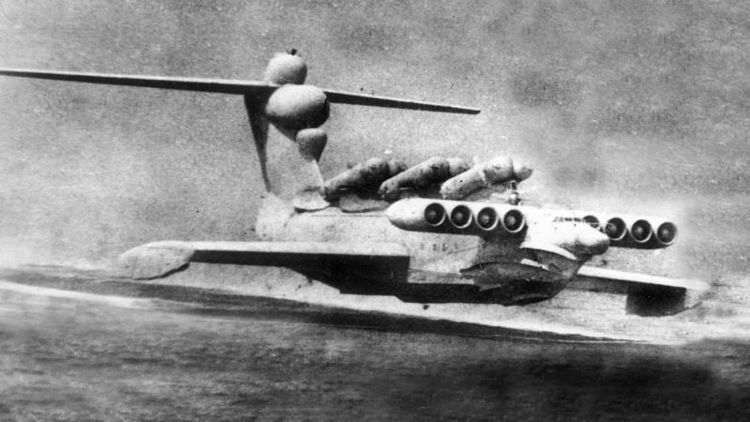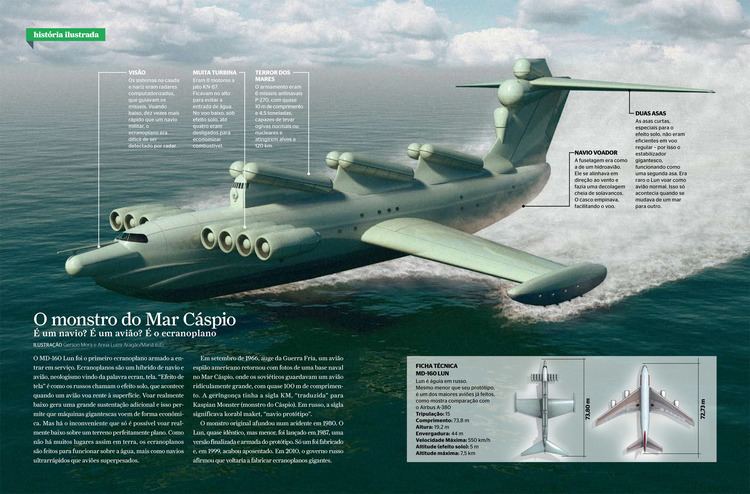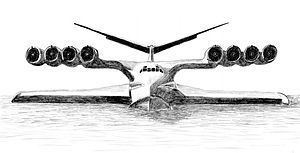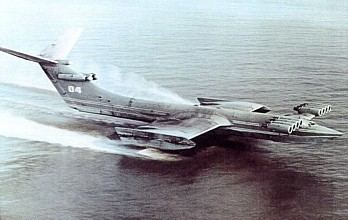Top speed 500 km/h Wingspan 38 m | Length 92 m Designer Rostislav Alexeyev | |
 | ||
Manufacturer Central Hydrofoil Design Bureau | ||
Caspian sea monster ekranoplan flight video
The Caspian Sea Monster, officially «KM» (Korabl Maket, Russian - Корабль-макет Experimental Craft), also known as the "Kaspian Monster", was an experimental ground effect vehicle (or ekranoplan)—a craft that flies, but stays close to the surface so it can rely on the ground effect. It was developed at the design bureau of Rostislav Alexeyev.
Contents
- Caspian sea monster ekranoplan flight video
- Wing in ground effect caspian sea monster in action another russian innovation we need to emulate
- History
- Testing
- Specifications KM
- In media
- References

Wing in ground effect caspian sea monster in action another russian innovation we need to emulate
History

The KM was designed in 1964–1965, and was unique in size and payload. The first photographs from American spy satellites showed a strange aircraft carrying letters "KM" on its fuselage. CIA disambiguated it as "Kaspian Monster", while it actually meant "Korabl maket" – "prototype ship" in Russian. The chief designer for this aircraft was Rostislav Alexeyev and the lead engineer was V. Efimov.

The ekranoplan had wingspan of 37.6 m, length – 92 m, maximum take-off weight – 544 tons. Until the An-225, it was the largest aircraft in the world. It was designed to fly at an altitude of 5–10 meters to use the ground effect.

KM was designed as a special vehicle for the military and rescue teams. However designing such a machine caused serious difficulties. It was documented as a marine vessel and prior to the first flight a bottle of champagne was broken against its nose. It displayed the Soviet Navy Flag and was assigned to the Soviet Navy, since the ground effect is only possible within several meters from the surface. The new vehicle was, however, piloted by air force test pilots.
Testing
KM testing started in 1966 at the Caspian sea near Kaspiysk (Dagestan).
First flight was performed by V. Loginov and Rostislav Alexeyev himself, which was very unusual - most Soviet aircraft designers never piloted their own creations. All works were conducted under patronage of the Ministry of Shipbuilding Industry.
The KM was determined to have an optimum (fuel efficient) cruising speed of 430 km/h (267 mph, 232 knots), and a maximum operational speed of 500 km/h (311 mph, 270 knots). Maximum speed achieved was 650 km/h (404 mph, 350 knots), although some sources claim up to 740 km/h (460 mph, 400 knots).
KM was tested at the Caspian Sea for 15 years until 1980. In 1980, pilot error caused a crash without human casualties. The vehicle was too heavy to recover from its watery wreck site. Authentic footage of this crash was recently posted on YouTube by an unknown source, only to be removed 2 hours and 43 mins later, possibly at the behest of The Federal Security Service of the Russian Federation.
Specifications (KM)
Data from The Osprey Encyclopedia of Russian Aircraft 1875 - 1995, Russias Ekranoplans:The Caspian Sea Monster and other WiG Craft
General characteristics
Performance
